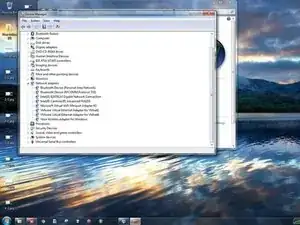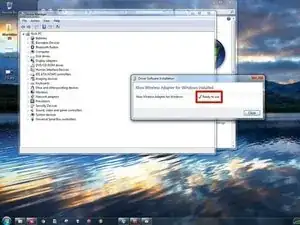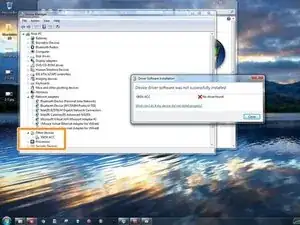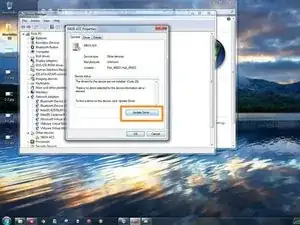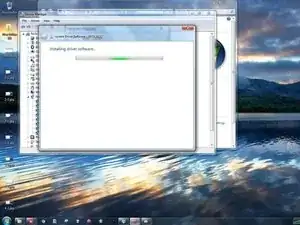Introduction
IMPORTANT: AS OF 1/1/2023, THIS GUIDE IS OBSOLETE AND WILL NO LONGER BE UPDATED. ALL OPERATING SYSTEMS COVERED ARE END-OF-LIFE AND NO LONGER UPDATED BY MICROSOFT. AS SUCH, I CANNOT GUARANTEE MICROSOFT WILL CONTINUE TO UPDATE THE DRIVERS. This guide will remain up indefinitely "AS-IS" but will no longer be updated. IN THE EVENT OF A MAJOR ISSUE, I MAY NEED TO TAKE THIS GUIDE DOWN PERMANENTLY.
If you purchased an Xbox Wireless Receiver for Windows and are wondering how to use it on Windows 7 or 8.x, this guide will show you how to install the drivers. Since Microsoft is aggressively pushing Windows 10 (despite most choosing to wait), problems have begun to show up with the process to push reluctant Windows 7 or 8.x users to upgrade. This guide will show you how to manually install the driver and get it working on these older systems.
IMPORTANT: While my screenshots show Windows 7, it is no longer supported by Microsoft as of 1/14/2020. Since the steps are still largely the same, I chose to keep using the existing photos.
IMPORTANT WINDOWS EOL NOTICES:
- PASSED: Windows 7: AS OF 1/14/2020, WINDOWS 7 IS END OF LIFE. I no longer support Windows 7. However, this procedure can still be used and works.
- PASSED: Windows 8.1: Windows 8.1 will be "EOL" on 1/10/2023, however, I am marking this guide "EOL" before the official date from Microsoft. As of 12/14/2021, I am not supporting Windows 8.1 users directly but will fix critical guide issues.
Guide notes
- In most cases, the receiver picks up the driver automatically but may need encouragement. Follow the manual steps in the event it does not automatically install.
- Windows 10 users: This guide is specific to Windows 7 and 8.x, not 10 as it required driver version changes. Refer to the Windows 10 guide.
-
-
Plug the Xbox Wireless Receiver into your PC. Before using the manual option, confirm the automatic installation worked.
-
Windows 7: Open the start menu and right click Computer. Select Manange and locate Device Manager.
-
Windows 8.x: Right click the Windows logo in the taskbar. Select Device Manager.
-
-
-
Open Device Manager and follow the steps specific to your version of Windows.
-
Windows 7: Open the start menu and right click Computer. Select Manange and locate Device Manager.
-
Windows 8.x: Right click the Windows logo in the taskbar. Select Device Manager.
-
Double click XBOX ACC and verify the error shown is Code 28. Click Update Driver, then Search automatically for updated driver software.
-
-
-
If the automatic driver install fails, download the appropriate .cab installation file (32/64-bit archive).
-
Select Browse my computer for driver software.
-
Locate the folder where the driver is downloaded and select Copy address as text. Paste the location into the box under Search for drivers in this lcoation:. Click Next.
-
-
-
To verify the driver was installed correctly, check under Network Adapters. This is where the adapter appears if installed correctly.
-
22 comments
I assume this does not work with the new version of the dongle
The small one only works in Windows 10. The fat one works in 7/8.x and 10. There is a dedicated W10 guide with a warning related to drivers.
Nick -
Thank you. It's a shame. Such intentional and shady practices from Microsoft, blockade on a driver. You seem to really know your stuff… do you know if the Windows 10 dongle has features the old one does not? Since I don't even need to google it to know the old dongle is no longer for sale outside of second-hand.
Not that I'm aware of.
I can still find the old one new so it's available. I doubt it's discontinued.
Nick -
I know this post is old… but I found it to be of the only help so far…
I got hung up on Step 4. Can you please explain in detail how to “Locate the folder where the driver is downloaded, and select Copy address as text. Paste this location into the box under Search for drivers in this location: “ ? I have literally tried everything and couldn’t get to that point. I am still getting Windows was unable to install your XBOX ACC Windows could not find driver software for your device. If you know the manufacturer…blah blah blah etc etc.
Larry G -
I’m thinking you’re downloading the x86 driver and trying it on x64 Windows or the other way around. Click the driver name and check the OS compatibility.
If you still can’t get it to work, make a Answers post.
Nick -
